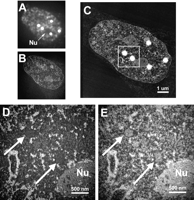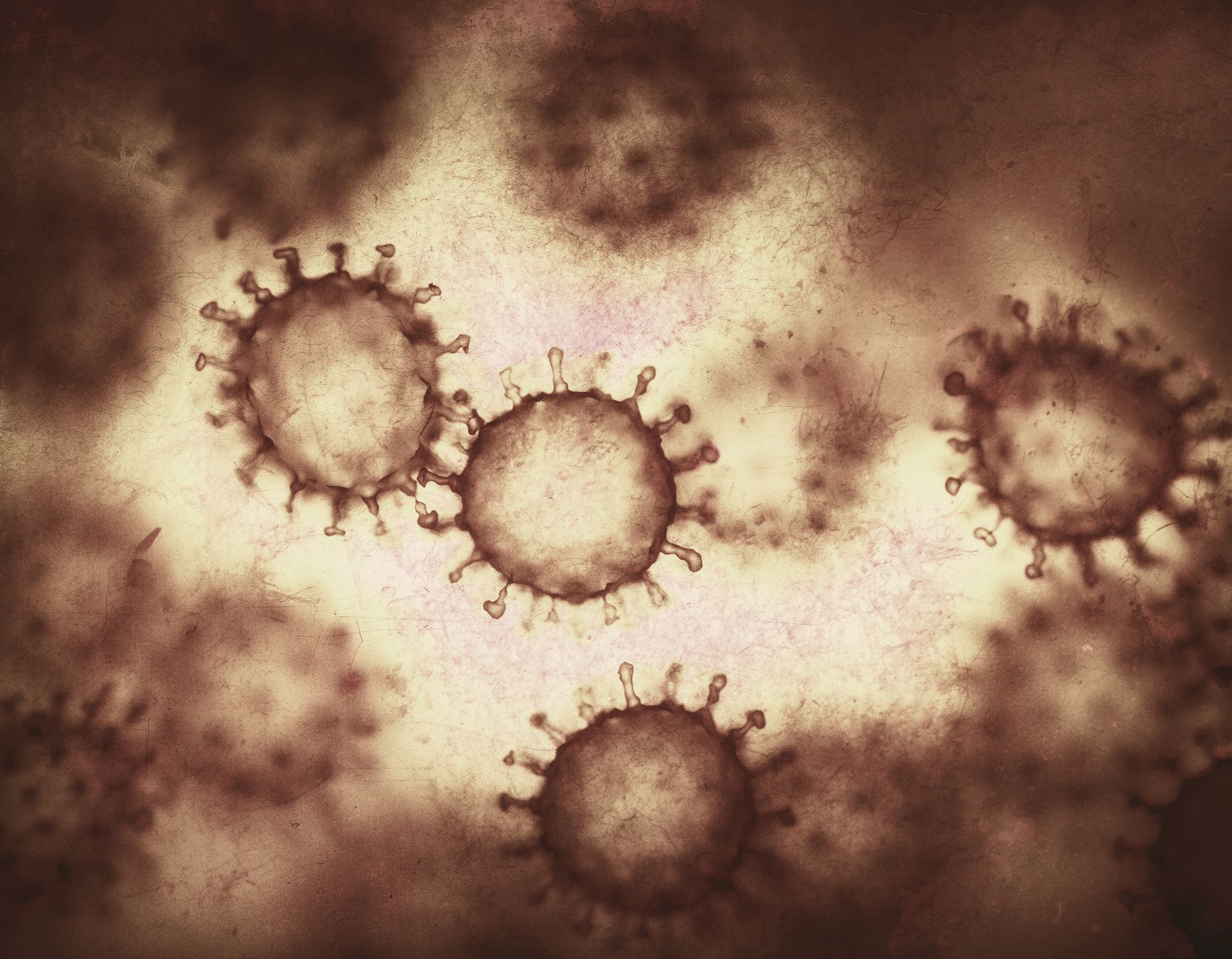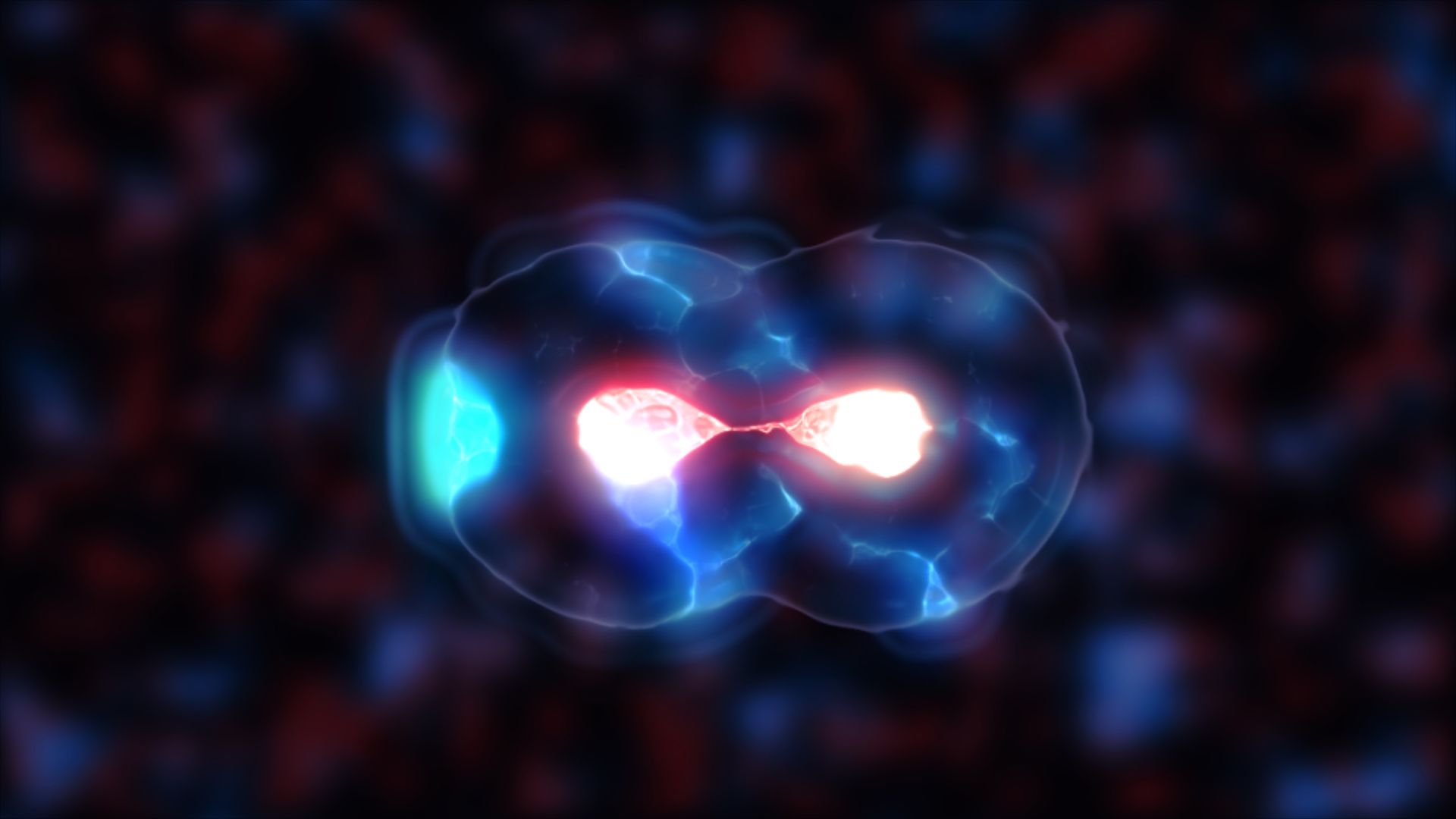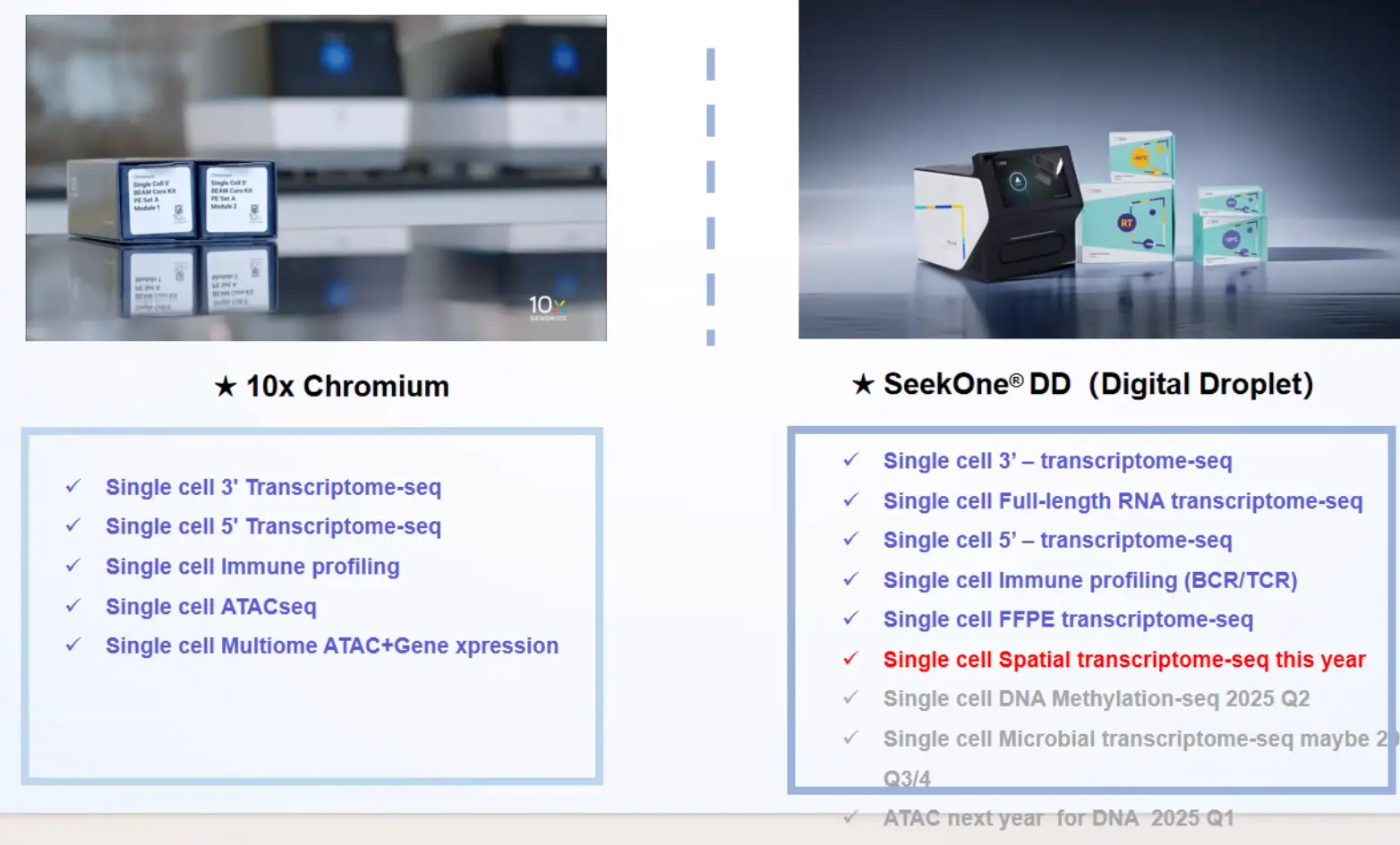Cell Nucleus
Welcome to cellnucleus, which aims to be a major portal for the field of nuclear organization and higher-order chromatin structure. Here you will find teaching materials for lectures, study materials for students, and review materials for research professionals. We intend to keep this site a free resource, for educational purposes, with help from the corporate community.
The first on-line lecture, by Dr. Michael Hendzel, is now posted with subsequent lectures to be authored by prominent individuals within the field. And, as an introduction to the fundamentals of nuclear structure, this site provides links to an excellent source of introductory material on the web written by Gwen Child as well as additional related web links.
Employing both a current trend in cell nucleus research and the multimedia capabilities of the world wide web, cellnucleus serves as a resource for movies of dynamics in the cell nucleus, cataloguing resources on the web and providing a repository for movies demonstrating dynamic phenomena in living nuclei. This is in addition to a comprehensive structure and antibody database. Finally, we include links to methodological information, positions available, conference announcements, sources of specialized equipment and image analysis tools.
In order to bring this educational material freely to academics, the cost of operating the website is covered through sponsorships and advertising. The immediate goal, however, is the evolution of this site through contributions of the field as a whole - culminating in a comprehensive and free resource while maintaining it's contents in an accessible format. As such, we welcome unsolicited submissions, suggestions, and comments.


Nuclear Speckles and Interchromatin Granule Clutsers
This is an introduction to the structure of these well-established intranuclear structures and the controversies surrounding the definition of their function. Prepared in Power Point by M. Hendzel, University of Alberta.
The nucleus is a vital organelle found in eukaryotic cells, often referred to as the "control center" of the cell. It contains the majority of the cell's genetic material, organized as DNA molecules along with proteins to form chromosomes.
Introduction to Higher-Order DNA Organization
Higher-order DNA organization refers to the complex structuring and packaging of DNA within the nucleus of eukaryotic cells. It involves multiple levels of folding and arrangement that allow the DNA to fit within the small nuclear space while maintaining accessibility for replication, transcription, and repair. This organization is critical for gene regulation, cellular differentiation, and the maintenance of genomic stability.

Structure of the Nucleus

A great title
- A double membrane that encloses the nucleus, separating it from the cytoplasm.
- Contains nuclear pores, which regulate the exchange of substances (e.g., RNA, proteins) between the nucleus and the cytoplasm.
Nucleoplasm:
- A gel-like substance inside the nucleus, also called nuclear sap.
- Provides a medium for the diffusion of ions, molecules, and enzymes necessary for nuclear processes.
Nucleolus:
- A dense region within the nucleus responsible for ribosome synthesis.
- Assembles ribosomal RNA (rRNA) with proteins to form ribosomal subunits, which are exported to the cytoplasm.
Chromatin:
- Composed of DNA and histone proteins.
- Exists in two forms:
-Euchromatin: Less dense, transcriptionally active regions.
-Heterochromatin: Densely packed, transcriptionally inactive regions.
Functions of the Nucleus
Genetic Information Storage:
Houses DNA, which contains instructions for protein synthesis and cellular activities.
Gene Expression and Regulation:
Controls the transcription of DNA into messenger RNA (mRNA), which is then translated into proteins in the cytoplasm.
Ribosome Biogenesis:
The nucleolus produces ribosomal subunits essential for protein synthesis.
DNA Repair and Maintenance:
Maintains genomic integrity by repairing DNA damage.
Cell Cycle Regulation:
Plays a key role in cell division by ensuring DNA is replicated and segregated correctly.
